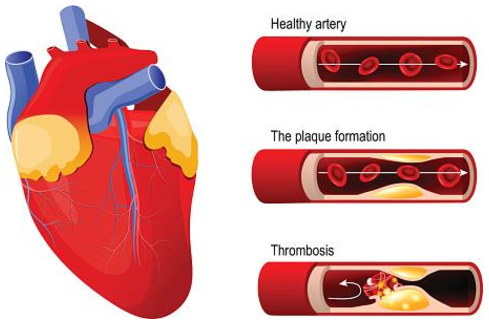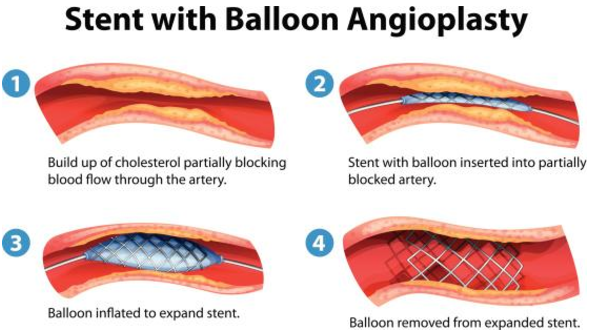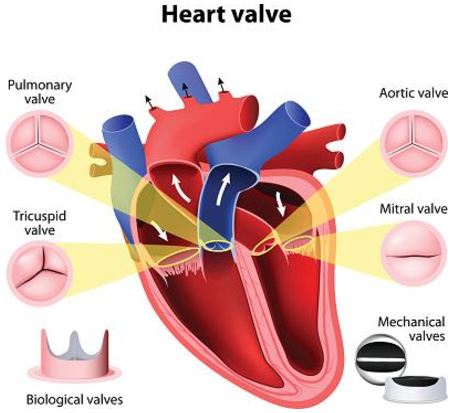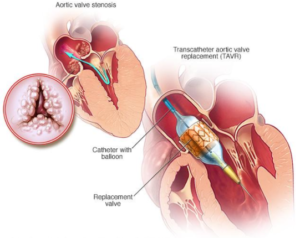Diagnostic Cardiac Procedures
Coronary Angiogram
A coronary angiogram is an x-ray procedure or test, used to examine the arteries of the heart.
The coronary arteries supply the heart muscle with blood and oxygen, so that the heart can pump and supply blood to the rest of the body.
The coronary angiogram is performed in a Cardiac Catheterisation Lab, Cath Lab for short, which is fitted with a specialised x-ray machine.
You will lie on the examination table on your back and during the test the x-ray machine will be positioned over you. The test usually takes around 30 minutes, but may take longer.
Angiograms are performed under local anaesthetic. You may also be given a light sedative before the procedure to help you relax.
The coronary arteries are accessed using a fine plastic tube called a catheter, which is inserted via an accessible artery, usually in your wrist but sometimes the groin. Your cardiologist will decide when examining you, which is the best approach for you.
The procedure is performed under x-ray guidance; the catheter is passed up to the heart where a special dye (contrast media) is injected into the arteries and a series of x-ray pictures are taken from different angles. At the end of the procedure the small tube (sheath) is removed and a special pressure band is applied to the wrist to stop bleeding, or if the groin is used for access, direct pressure is applied. You will then be taken to the Day Ward.
The outcome of this test will determine your treatment.
You may require Coronary Angioplasty, which involves insertion of a stent into an artery, you may require cardiac surgery, or you may need medication to assist with your symptoms.
To determine the need for a stent (angioplasty) often a pressure wire or FFR (Fractional Flow Reserve) measure will be done see FFR
Atherosclerosis

Pressure Wire Study or FFR (Fractional Flow Reserve) measurement.
A pressure wire study is a tool to assess the blood flow pressure through a coronary artery. It is used to determine whether the narrowing observed on a coronary angiogram limits blood flow and therefore is producing ischaemia (lack of blood flow to muscle which may cause pain). The study is performed using a specialised wire called a Pressure Wire, which has a tiny microchip that measures the pressure of blood flow in the coronary artery. A drug called adenosine is given intravenously during the study to stimulate exercise.
The operator can determine the severity of a narrowing, and the best method of treatment. If the narrowing is causing flow limitations it may require angioplasty and stenting, or surgery maybe required. If no significant flow limitation demonstrated, it may be managed medically.
‘Full’ Heart Study
This is a procedure done using a specialised catheter and is done to determine the pressures in the right and left heart chambers of the heart and pulmonary artery bed.
It is a diagnostic tool for evaluating the effects of valve disease on the heart. It can also give a measurement of cardiac output – how much blood your heart is able to pump out at each heart beat.
A full heart study can also help diagnose atrial septal defects’ and patent foramen ovale’s by taking multiple blood gas samples in the heart chambers, large veins and arteries to determine oxygenated and deoxygenated blood flow/mix in the heart.
The ‘right’ heart study is done first and access is either through a vein in your arm or your groin (femoral vein). A coronary angiogram follows and access is through the femoral artery.
A left ventriculogram may be done . This involves injecting dye or contrast into the left ventricle of the heart. It can assess the pumping action of the heart and how well the Aortic and Mitral valves are working.
Interventional Cardiac Procedures
Angioplasty
Coronary angioplasty is a non-surgical means for opening blocked coronary arteries using fine tubes called catheters introduced usually from the wrist or sometimes the groin is used. Most narrowing’s are best treated with balloons and stents (fine mesh tubes). Stents reduce the chance of re-narrowing.
Angioplasty is carried out in an angiography suite (theatre) called a “Cath Lab”.
Under local anaesthesia, a specialised tube (sheath) will be placed in your wrist or groin through which a guiding catheter is passed up to the coronary arteries.
Your interventional cardiologist uses the X-ray screen to track the path of the catheter.
Through the guiding catheter, a wire about the thickness of a hair, is passed across the narrowing.
A stent (a fine mesh tube, which comes squashed down on a balloon) is directed across the narrowing over a wire. The balloon is inflated to expand the stent and artery. The stent is pushed into the artery wall holding the artery open.
The balloon is deflated and removed leaving the expanded stent in place. Once expanded the stent cannot move. For some patients the artery is widened by a balloon alone.

Clopidogrel (Plavix) https://www.healthnavigator.org.nz/medicines/c/clopidogrel/
https://www.heartfoundation.org.nz/your-heart/heart-treatments/medications/antiplatelet-agents/
Restenosis (Re-narrowing)
Although stents reduce the chance of re-narrowing of the angioplasty site, it can still occur. It is due to the healing of cells growing through the mesh of the stent. It is most common between 6 weeks and 6 months after stenting . It is more likely to occur in small diameter arteries, long narrowing’s and in diabetic patients. If it does occur, it is usually possible to treat the artery again.
Types of Stents:
Bare metal stents – These are a fine mash tube with no drug coating. They may be used in patients that require surgery or cannot take anticoagulants.
Drug Eluting Stents (DES) – These are bare metal stents covered with a drug which is ‘eluted’ or released, over a period of time. The drug reduces the inflammatory response from the endothelial cells in the artery. It reduces the possible production of clot or thrombus which may block off the stent and also reduces the possible extra production of cells which may migrate into the stent and artery lumen, narrowing and blocking the artery.
Scaffolds – These are resorbable stents (scaffolds) that will hold the artery open but will reabsorb into the body within a given amount of time. This is new technology and the implanting is limited to specific criteria such as where the narrowing is in the coronary artery system, how large the vessel is and how long the narrowing is.
See video
Structural Heart
BAV – Balloon Aortic Valvuloplasty
This is a procedure to treat Aortic Valve Stenosis, AS. AS can be due to degenerative / calcified, bicuspid valves or rheumatic disease. This is a condition where the aortic valve has become narrowed or constricted (stenotic) and doesn’t open or close properly
When the aortic valve become stenotic the ability of the left ventricle to pump blood out of the heart into the aorta and other arteries is impaired, and the organs receive an insufficient supply of oxygen rich blood. This impairment results in blood “back flowing” into the lungs and causing shortness of breath.
Valvuloplasty is done to relieve the stenosis and improve the symptoms of AS.
TAVI or TAVR
This is the replacement of the aortic valve of the heart through the blood vessels (as opposed to valve replacement by open heart surgery). This involves the use of a multidisciplinary team of cardiologists, cardiovascular surgeon, and supporting group (for example, imaging specialists, geriatrician, cardiac anaesthetist). It benefits patients and has enabled TAVI to become the standard of care for inoperable, high risk and intermediate risk patients with severe aortic stenosis.
The catheter procedure was developed in France, initially performed in 2002 on April 16 by Prof Alain Cribier in Hospital Charles Nicolle, at the University of Rouen. It is now approved in more than 50 countries.
TAVI offers:
- A minimally invasive procedure.
- No heart lung machine.
- A decrease in patient morbidity.
- Early ambulation and patient comfort and improved quality of life .
- It saves lives for high and intermediate risk patients.
ASD / PFO Closure
Atrial Septal Defect / Patent Foramen Ovale
LAA Closure
Left Atrial Appendage Closure


